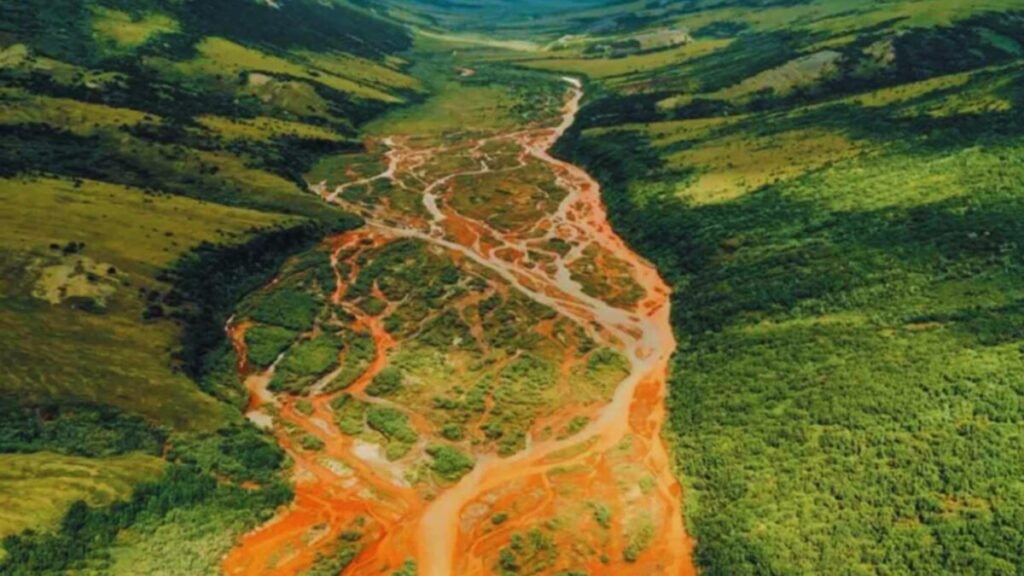Alaska’s Rivers are Flowing Orange: A Disturbing Sign of a Changing Arctic.

The Arctic used to evoke images of pristine landscapes, where glaciers and rivers maintained an ancestral balance. The Salmon River, in the Arctic, reflects the face of a silent and corrosive process, altering the water chemistry and threatening to transform the region irreversibly.
### The awakening permafrost after millennia

Lay, frozen for thousands of years, a soil rich in minerals that had never been in contact with oxygen and water on such a scale. The global increase in temperatures opened those ice scars, releasing trapped sulfides that react with the air, producing sulfuric acid.
This acid drags metals like iron, cadmium, and aluminum into the rivers, dyeing the waters an unmistakable orange hue. Although its appearance resembles acid mine drainage, there are no human excavations here, but it is driven by warming that destabilizes the entire Arctic ecosystem.
### Ecosystems trapped in toxic waters

The Arctic witnessed the phenomenon in 2019 when the river did not regain its clarity after the thaw. Since then, analyses confirmed cadmium and iron concentrations that exceed safe limits for aquatic life. Cadmium accumulates in fish organs, affecting predators like bears and birds. The river, a subsistence base for indigenous communities, faces an increasingly hostile habitat. Species like the Arctic char or the Arctic tern also suffer the consequences of a river that no longer offers the refuge it once did.
### A future of no return in the Arctic

Unlike mining pollution, there are no walls or containment systems possible here. There are hundreds of chemical drainage points scattered across remote basins, with no infrastructure to control them. Experts warn that only a return of the Arctic to its frozen state would stop the reaction, something unlikely on a planet that is warming relentlessly.
Thus, each orange stretch of the Salmon River not only reflects oxidized metals:






